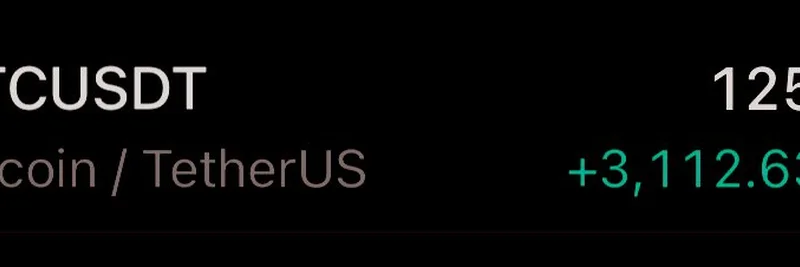Hey there, crypto enthusiasts! If you're knee-deep in the world of blockchain and meme tokens like I am, you've probably seen the buzz around Bitcoin's latest moves. A recent tweet from @Altcoinist_com caught my eye, emphasizing that "15 years of data > impulse influenzas" – which I believe is a clever jab at relying on solid historical patterns over fleeting influencer hype. This post quotes an earlier statement from the same account back in September 2025, predicting a final upside push for $BTC by the end of the year based on seasonality trends.
And guess what? As of October 5, 2025, Bitcoin is sitting pretty at over 125,000 USDT, showing a nice +2.54% gain in the snapshot shared.
This isn't just random optimism; it's backed by years of market behavior. Let's break it down and see how this could shake things up for meme tokens.
Understanding Bitcoin Seasonality: The Basics
Seasonality in crypto refers to recurring price patterns that tend to happen around the same time each year, based on historical data. For Bitcoin, these trends are drawn from over a decade of trading history, helping traders spot potential highs and lows. Think of it like how stock markets have "sell in May and go away" – but tailored to BTC's wild ride.
According to various analyses, Bitcoin often experiences stronger performance in the fourth quarter. For instance, data from sources like Barchart and TradingView show that months like October (affectionately called "Uptober" in crypto circles), November, and December have historically delivered positive returns more often than not.
Take a look at this seasonality chart from Seasonax, which indexes Bitcoin's average performance throughout the year. You'll notice dips in the summer months, followed by a rebound starting in the fall. Over the past 15 years, Q4 has been a powerhouse, with average gains that outpace other periods. This aligns perfectly with the tweet's prediction of an end-of-year upside.
Historical insights from InvestingHaven highlight key months: January often acts as a reversal point after year-end sells, while March and October stand out as strong performers. Of course, past performance isn't a guarantee, but with Bitcoin's halving cycles and growing institutional adoption, these patterns are worth watching.
How BTC's Upside Could Fuel Meme Token Mania
Now, why does this matter for meme tokens? At Meme Insider, we're all about those viral, community-driven coins that thrive on hype and market momentum. When Bitcoin pumps – like the surge to 125K we're seeing now – it often acts as the tide that lifts all boats in the crypto sea. Meme coins, being more speculative and tied to altcoin seasons, tend to amplify these moves.
Remember, altcoin seasons (or "altseasons") are periods when alternative cryptocurrencies outperform Bitcoin. Data from the Altcoin Season Index shows that after BTC stabilizes or rallies, capital flows into riskier assets like memes. If seasonality holds and Bitcoin pushes higher by December 2025, we could see a fresh wave of meme token launches and pumps on chains like Solana, Base, or Ethereum.
For blockchain practitioners, this is a cue to brush up on your knowledge base. Tools like CoinGlass for return history or MacroMicro for seasonal stats can help you stay ahead. And if you're holding or trading meme tokens, keep an eye on Bitcoin's dominance – a drop below 50% often signals altcoin gains.
Wrapping Up: Data Over Drama
The tweet from Altcoinist_com is a timely reminder: In crypto, hard data trumps impulsive takes from influencers. With 15 years of seasonality backing a potential year-end rally for Bitcoin, meme token enthusiasts have reason to be excited. Whether you're a seasoned trader or just dipping your toes into the meme world, understanding these patterns can enhance your strategy.
Stay tuned to Meme Insider for more updates on how macro trends like this impact your favorite tokens. What's your take on BTC's seasonality – bullish or cautious? Drop your thoughts in the comments[3][9][5][2][1]



